For expats, retirees, or digital nomads, Málaga has much to offer. It’s relatively safe, international, modern, affordable, well-connected, has excellent weather, and radiates life. The beautiful city boasts a stunning natural environment and historic buildings, making it an attractive destination to call home.
Here’s our exclusive expat guide to living in Málaga - the capital of the Costa del Sol.
Secure Peace of Mind with Best-Value International Health Coverage
International Citizens Insurance provide free, no-obligation quotes from the leading international health insurance providers with plans tailored to meet your needs. Trusted by thousands of expats worldwide.
Is Málaga an ideal place to live and retire?
Spain’s Costa del Sol, in the autonomous region of Andalucía, is one of Europe’s premier destinations, and Málaga is its epicenter, so yes, it’s a great place to live.
Málaga is a popular tourist destination known for its spirited lifestyle, stunning beaches, and historical landmarks.
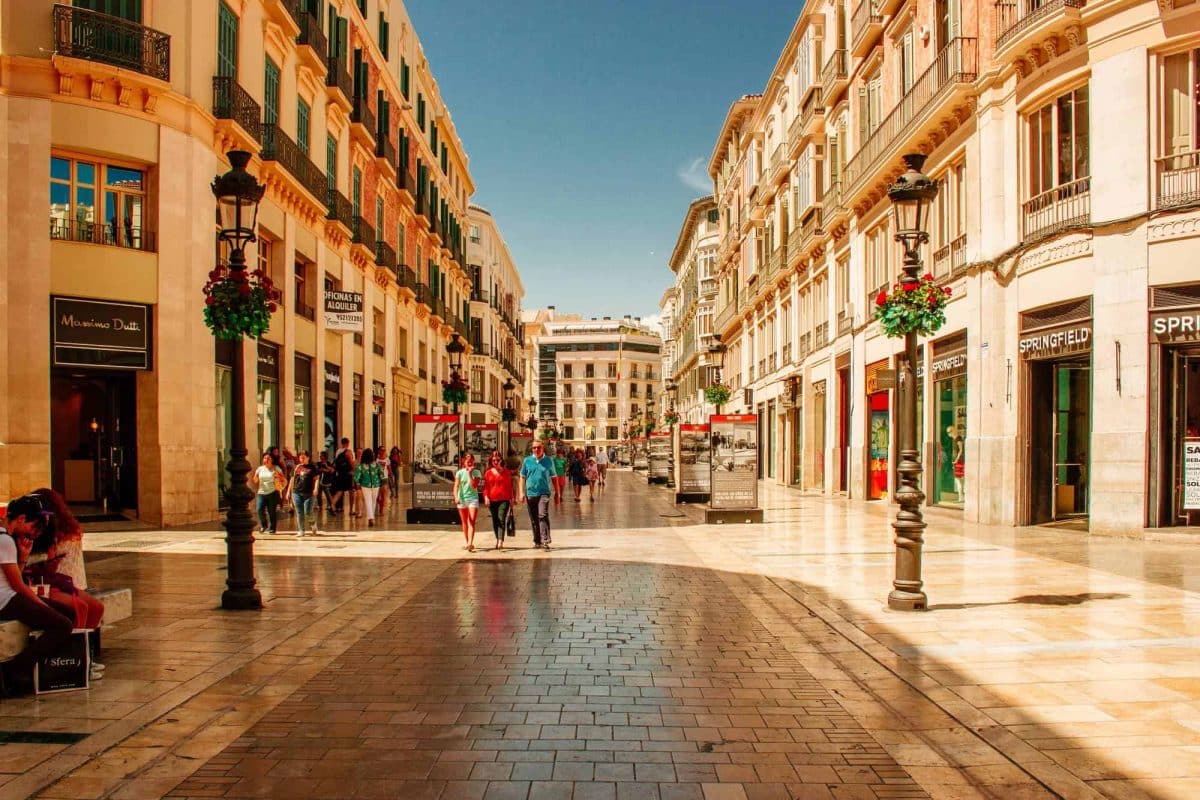
An old city founded in 770 BC by the Phoenicians, Malaga wears her age exceptionally well. Rich in culture and history, the city offers an alluring setting for retirees.
The historical center is a cultural hub, boasting several notable museums that international visitors. Prominent among these is the Museo Picasso, which displays an extensive collection of artworks by Pablo Picasso, who was born in Malaga.
Another important cultural site is the Museo Carmen Thyssen Málaga, located in a restored 16th-century nobleman’s home. Here, visitors can explore an impressive array of paintings by the Old Masters and Spanish artworks from the 20th century.
Additionally, Malaga’s coastal location makes its beaches an undeniable attraction. Playa Malagueta offers nearby sandy shores conveniently located east of the city’s port. Not far from here, Playa de la Caleta, set against an older residential backdrop, provides a quieter beach-going experience.
To the west of the port, the Huelin-San Andres area has a variety of enjoyable beach spots.
In contrast, Playa de la Misericordia, one of Malaga’s most frequented beaches, is renowned not only for its expansive sands but also for its historical 19th-century industrial relics, including old chimneys along its promenade.
Together, these stand-out qualities make Malaga an alluring proposition for retirees who want to live in a place with cultural richness, openness, and leisure opportunities.
A Safe City With Near Year-Long Summers
Along with being one of Europe’s safest cities, Málaga offers year-long summers, pristine Mediterranean beaches, incredible cuisine, and accommodations for all lifestyles.
Málaga is a great destination for singles, retirees, digital nomads, and families. Hot summer days contribute to Málaga's appeal for outdoor activities and beach life.
Spain has always been open to the LGBTQ communities, and Málaga is arguably the most popular city.
Málaga’s relaxed lifestyle and affable community are very accepting of English speakers. English is very much Málaga’s second language.
Insider Tip: Learning to speak Spanish earns great respect from the locals, known as Malagueños.
Málaga works hard to be open to everyone. Wheelchair accessibility is city-wide, even in taxis.
La Malagueta and Misericordia beaches have ramps, wheelchair-accessible toilets, and showers staffed by trained professionals. Amphibian chairs and hoists are available during the summer.
Insider Tip: Málaga is a flat and well-maintained city. The paving is finished with a cobbling effect which helps provide traction for wheelchairs.
Málaga is a city of pleasure, activity, and sport.
Watersports, mountain hiking, soccer/football, basketball, adventure, and more than a dozen golf courses - Malaga has it all.
Love fishing? Enjoy deep-sea fishing for sea bass, Dorada, Bonito, tuna, marlin, and swordfish.
The Sierra Nevada mountains are to the east and home to some of Europe’s best skiing and winter sports.
Besides, Málaga is amongst the top European cities with the best quality of life and acceptance of expats.
Málaga is the cultural capital of the Costa del Sol
Málaga city is a paradise for culture vultures. It has transformed into a cultural capital with numerous tourist attractions and events throughout the year. Culturally speaking, there is always something going on.
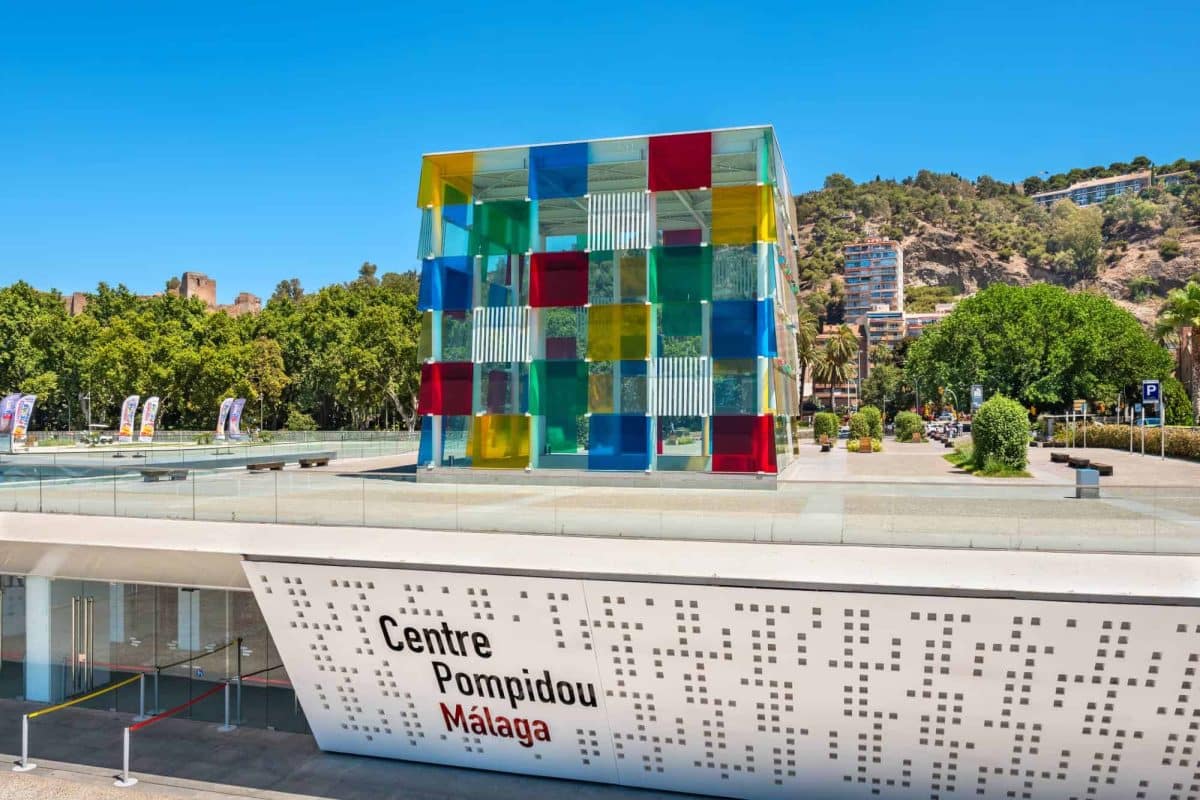
Malagueños live and breathe music and dance so much that other Spaniards call Málaga “Cantaora” (singer). Flamenco is ingrained in Malagueño culture and has its own festival, Flamenco Biennial, every November.
In fact, every month of the year is festival time in Málaga:
- In January, the Contemporary Music Festival
- February and March are Málaga’s Carnival
- August is the Málaga Feria, the annual fireworks-filled fair
- October is Picasso Month
- One of Europe’s largest Jazz festivals in November.
- All ends with a festival of dance in December, the Verdiales Festiva.
If you are a visual art connoisseur, you will love living in Málaga.
The Museo Picasso, offering an intimate look into the life and creativity of the city’s most famous son, is one of Málaga’s nearly 40 museums.
Insider Tip: Most museums offer free admission on Sundays.
Contemporary art lovers will enjoy The Cube at the Centre Pompidou Málaga at the port.
If you are a fan of urban art and underground culture, you will appreciate the Soho district, home to an outstanding Street Art Project.
Málaga’s heritage also has a jaw-dropping natural heritage.
El Torcal de Antequera, a UNESCO site, is one of Europe’s most remarkable karst reserves.
The Fuente de Piedra Lagoon, Iberia’s largest natural lake, hosts Europe’s second-largest flamingo colony.
The world’s oldest Neanderthal cave paintings are in the prehistoric world of the Fundación Cueva de Nerja.
Málaga city has numerous zoos, aquariums, botanical gardens, reserves, and castles, including Cortijo Jurado, a real haunted castle!
Málaga’s climate is one of its biggest attractions
Bathed in more than ten months of sun, Málaga feels like an endless sabbatical with pleasant weather year-round.
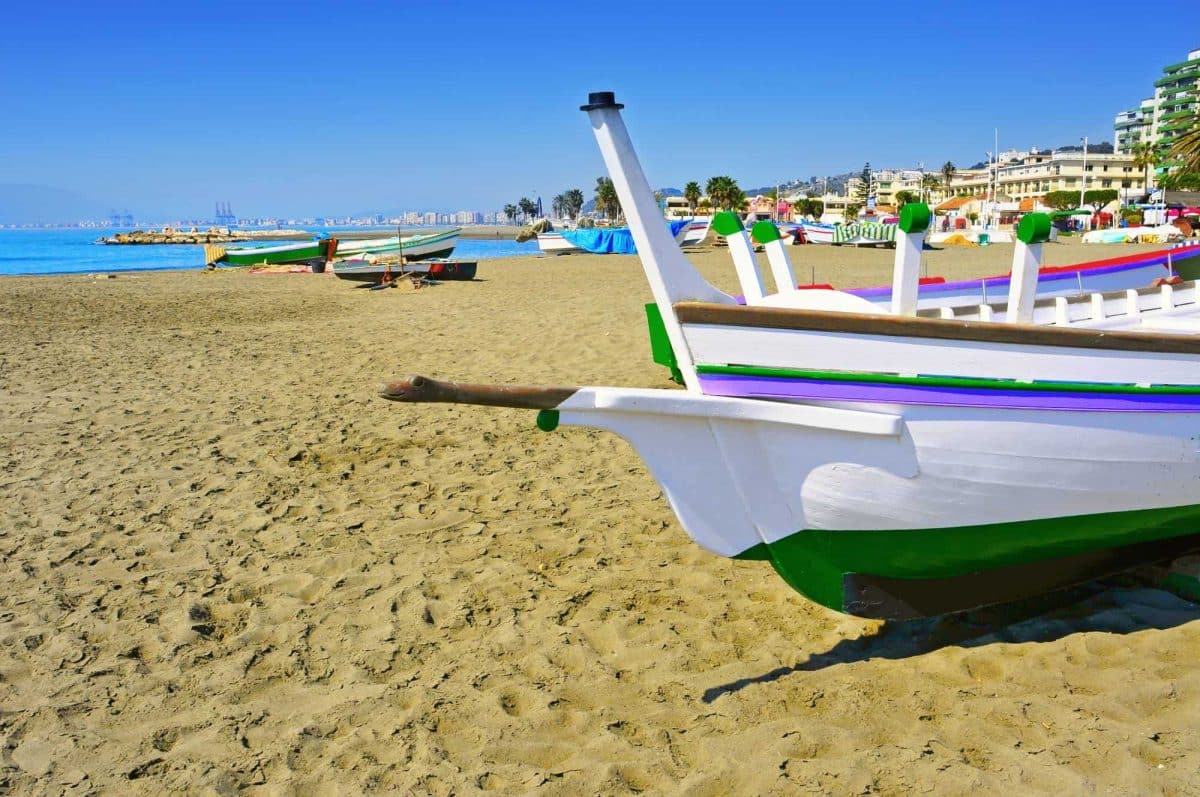
The Mediterranean provides moderate springs and autumns, sandwiching a long dry, hot summer.
January is the coldest month, November the wettest, and July and August are the hottest and driest months of the year.
Málaga’s winters are the warmest in Europe. The short season is defined by rain and wind, lingering around 60 F/16 C.
Insider Tip: Málaga only requires summer and fall clothing.
December to February is the only time swimming is not an option unless you have Nordic blood. Even then, sunbathing on the beach behind windbreakers is still a favorite way to pass the sunny days.
Is Málaga expensive to live in?
The amount required for retirement in Málaga varies significantly based on the neighborhood chosen for residence.
With its proximity to main attractions and greater employment opportunities, Málaga city tends to have higher rental prices and a more significant impact on the overall cost of living in Málaga.
If you’re a retiree and plan on buying a property so you’ll have no rent or mortgage, a couple can live well on a budget of around €2200 a month.
If you’re renting, a single person could comfortably live on €1500 a month, a couple on €2600, and a family of four around $3700/€3200.
Málaga’s affordability is very competitive with Porto, Portugal.
In Málaga, real estate value can vary dramatically depending on age, amenities, and location.
Málaga rentals fluctuate between 8-15 €/m2.
Studios rent for around €550, and one—to four-bedroom apartments cost between €650/1750 a month.
Property sales average between 1200-2800 €/m2.
Apartments can be found at around €135,000.
Utilities average €100 a month for 1-2 people.
Insider Tip: Spanish rentals require deposits of 1-12 months, a bank guarantee, or a letter proving employment. Plus, agencies typically charge a finder’s fee.
You can find more information on rents and rental procedures in our Renting a Property In Spain guide.
Golden Visa properties
Málaga’s real estate market has proven to be a solid option for Spain’s much-desired residency-by-investment program.
Luxury in Marbella
If you are after a luxury property, head to Marbella, a Málaga suburb and the hub for luxury real estate.
Property rents around $23/20 €/m2 here. One to five bedrooms will cost between €2000-10000 a month.
Marbella real estate averages 3,200 Euros per square meter, with luxury villas going into the multi-millions. This is one of the most popular areas for Golden Visa property investors who love the idea of buying a luxurious home on one of the most exclusive strips of land and getting Spanish residency as a bonus.
To understand how to purchase property safely and avoid fatal mistakes, read our Buying A Property In Spain guide.
Health insurance
Don't forget to budget for your healthcare insurance. Although, as a legal resident, you can use Spanish state-funded healthcare, many expats opt for private insurance.
International health insurance is also a popular option. To make sure you get the best value for money, compare international health insurance options from various providers to find the best deal.
Read more on healthcare in Spain, your options, and costs in our guide Health Insurance For Expats In Spain.
Driving in Málaga city center
Malaga is a busy city. The city center is almost always heavy with traffic. Avoid driving through the center between 8:30 and 9:00 a.m., 1:30 and 3 p.m., and 7 to 9 p.m.
Finding where to park can also be challenging. You can almost always find a space in the public car parks in the city center, but they are not cheap. If you need parking for less than 2 hours, look for blue zone parking; it is more affordable.
Find more information on Spanish driving regulations and the car registration process in our guide, Sorting Out A Car And Driving In Spain.
The best areas to live in Málaga
Málaga is a consortium of lifestyles in various districts.
El Centro
El Centro, the Old City Center, in downtown Málaga—a location accessible to everything from daily life to pleasure. In the summer, you’ll see more tourists than locals.
Soho
Whether street art, modern art, or culinary arts, Soho is the Art District and one of Málaga’s most sought-after addresses.
Between the port and El Centro, forget New York City or London. Soho is the hip and swanky place to be, with exhibitions, brewpubs, sushi bars, international restaurants and clubs, and a skateboarding park along the river’s edge.
La Malagueta
Málaga’s most famous beach district is a definite home for the Mediterranean beachfront lifestyle. Located next to Soho and between Castle Gibralfaro and the sea, the district brags about its 4000 ft/1200 m of coastline.
From the Castillo de Gibralfaro, you can enjoy a breathtaking view of the whole city, making it a favorite spot for panoramic views.
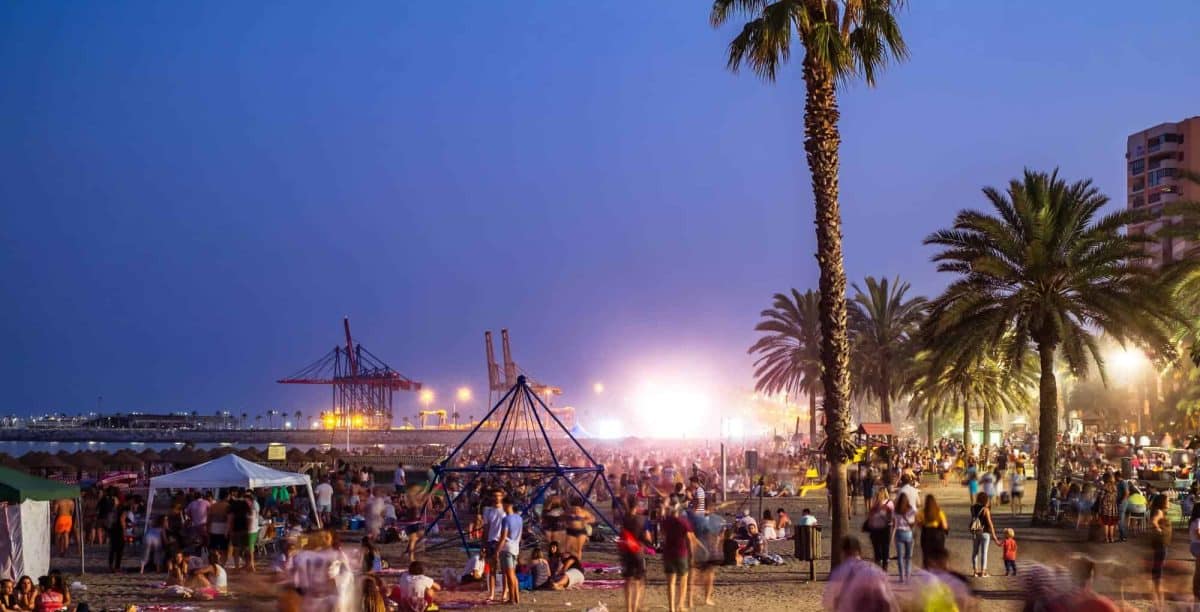
Expat families favor La Malagueta. It has a very international presence and is considered Málaga’s best example of urban development. It is very peaceful and hosts many of Málaga’s 30+ international schools.
La Malagueta is one of Málaga’s most expensive areas. Its northeastern neighborhood, El Limonar, is the city’s most exclusive address.
Paseo Marítimo de Oeste
Paseo Marítimo de Oeste is also a beach district on the western side of Málaga, the more affordable side. A working-class area filled with stores, activities, parks, and plazas, the Malagueños favor this area.
Teatinos
As Málaga’s university district, it’s modern, has dynamic nightlife, and is very international, both in presence and cuisine. Students and young families favor it because it focuses on that budget and lifestyle.
La Merced
Málaga’s trendiest area was also Picasso’s home. Centered by its vibrant Plaza de la Merced, it’s a lively district that foodies will enjoy, with plenty of cafes, restaurants, markets, shopping, and tourists.
El Perchel
Among Málaga’s oldest but very functional districts, El Perchel is another working-class area that is not touristy. It’s home to the port, the beach, the central train station, the bus station, supermarkets, plazas, activities, and Málaga’s freshest seafood.
Torremolinos
On Málaga‘s western side and another beach district, Torremolinos is one of Spain’s most open LGBTQ communities with a vibrant gay scene. Torremolinos has an impressive 6 miles/9 KM of coastline, dozens of nightclubs and discos, aqua parks, and theme parks. Torremolinos is a district of parties and fun, but it is not ideal for those who prefer more tranquil surroundings.
Málaga’s Neighboring Suburbs
Málaga’s suburbs can cater to all lifestyles.
Marbella
Marbella is Málaga’s chicest area. Puerto Banús and the Golden Mile are its most exclusive addresses.
Marbella is where royalty holidays with global celebrities and international tycoons happen. It offers multi-million dollar villas, superyacht marinas, and luxury shopping.
Our Living In Marbella guide provides more information about expat life in this area, including the pros and cons, costs, best areas, schools, etc.
Benalmádena
About 20 kilometers southwest of Malaga, Benalmádena offers a great mix of attractions, including theme parks, marinas, and beaches. Its diverse appeal makes it ideal for retirees who seek both leisure and adventure in their daily lives.
Estepona - Costa Natura
The Garden of the Costa del Sol, Estepona, is a modernized fishing village with views of the Rock of Gibraltar and Morocco. Estepona has an upscale marina, resorts, and beaches.
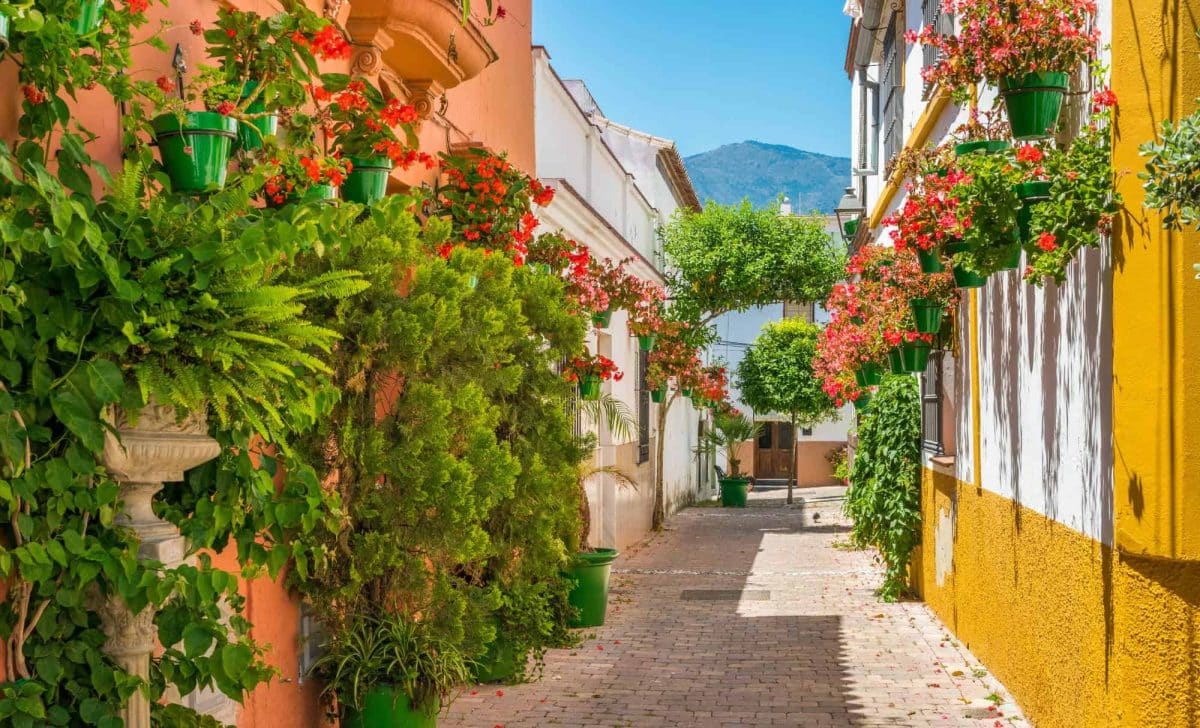
Estepona is often synonymous with its famous resort Costa Natura, a residential family-oriented nudist community. Spain’s first nudist resort, Costa Natura, offers day passes for anyone to enjoy.
However, Estepona is much more than that. It's also a brilliant family location, perfect if you are looking for a quieter life. To know more about Estepona's pros and cons, lifestyle, costs, and various areas, read our Living In Estepona guide.
Nerja
Nerja is an excellent choice for a more laid-back and scenic setting. Situated roughly 50 kilometers east of Malaga, it features breathtaking views from the Balcón de Europa and has some of the region's most stunning beaches.
Travel links, international airport, and transport in Málaga
Málaga sits comfortably in Spain’s southern corner but is wholly connected to the world.
The city hosts one of Europe’s busiest international airports, Málaga—Costa Del Sol (Pablo Picasso) International Airport. Traveling to other countries is convenient due to the well-connected international routes.
The Port of Málaga is one of Europe’s favored cruise ship destinations, offering ferry routes to Morocco and the city of Melilla. The coastline hosts 15 marinas.
Insider Tip: Ceuta and Melilla are Spanish cities on the African continent. Though they are part of the EU, Spanish authorities conduct passport checks when you depart from them. So keep your documents ready.
Málaga’s functional metro system offers monthly passes for 50€ —100€, depending on the distance from the city center, with discounts for students and retirees.
Málaga also connects domestically and internationally via its central train station, R.E.N.F.E. - Málaga María Zambrano, and by bus.
The city is less than a 2-hour drive to Gibraltar, 3 hours to Madrid, and 6 hours to Lisbon.
Internet and mobile connection in Málaga
High-speed, reliable 3G/4G/5G internet, fiber optics, and Wi-Fi are the backbone of Málaga’s connectivity.
Málaga was chosen to host a Google Cybersecurity center, Spain’s first "Cloud" region, and Vodafone’s newest Business European center.
No-contract unlimited mobile data averages around $28/€25 a month. Monthly residential internet (12 Mbps) averages about $45/€40.
Insider Tip: Some internet providers bundle free TV with nearly 200 European channels.
Banking and finance facilities in Málaga
Finances are easily managed in Málaga, and international banking, including Barclays, Citibank, and Deutsche Bank, is widely available. Opening a Spanish bank account is relatively easy.
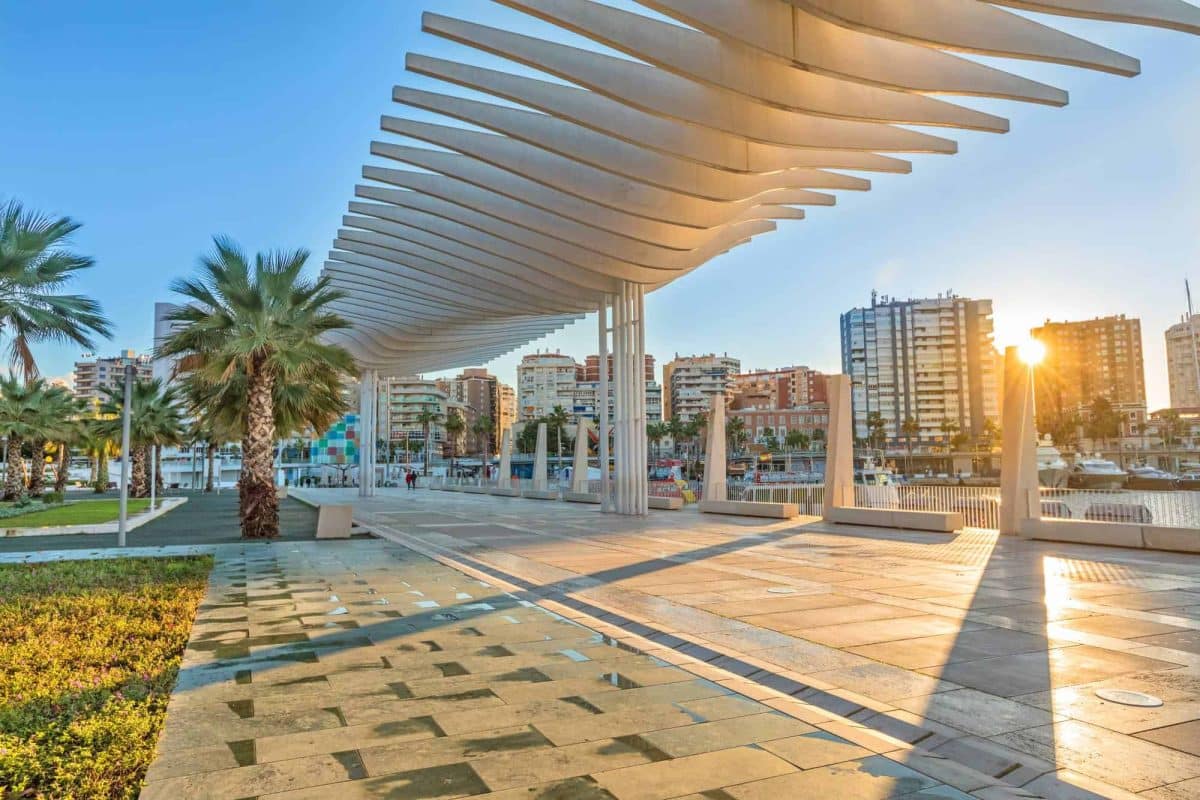
Málaga also provides access to crypto exchanges, ATMs, and tellers with the presence of Bitbase operators.
Coworking spaces in Málaga
You will find plenty of them. Equipped and comfortable coworking spaces are throughout Málaga, accommodating a region saturated with talent.
Málaga beaches and coast
Málaga offers dozens of fully serviced beaches. Chiringuitos (beach bars), cafes, restaurants, and shops, with lifeguards and regular police patrols during the tourist season.
There are also a few beaches that are nothing more than sand and the sea.
Remember that it’s illegal to use soap or shampoo in beach showers or the sea. Also, many beaches are adopting a no-smoking/alcohol policy.
On the western side is Playa de los Álamos in Torremolinos. A favorite for surfers and families, it offers everything you could want at the beach.
Most beaches offer a nudist area or are nudist tolerant, as the right to be nude is enshrined within the Spanish Constitution.
Playa Nudista Guadalmar is Málaga’s most famous nudist beach and the only officially recognized one within the city.
Insider Tip: The city’s easily accessible beaches will be packed during the summer. For a less-crowded stretch of sand, head east to the quaint fishing village of Pedregalejo, a 19th-century retreat for the Bourgeoisie. The pristine beaches are relatively exclusive and open to those in the know.
Or try Playo de Maro, an hour past Pedregalejo. The beach is secluded among green hills and outlined by crystal clear water. It's perfect for snorkeling, kayaking, and diving.
Málaga’s beaches are family-friendly, and every beach is open to everyone; private beaches have been illegal under Spanish law since 1982.
Foodies' paradise
Málaga’s cuisine focuses on seafood, especially the freshly caught Mediterranean anchovy. So much, that Spaniards call Malagueños boquerones (anchovies).
Málaga offers a variety of international food options, making it comparable to cities like London or New York, though some cuisines might be harder to find.
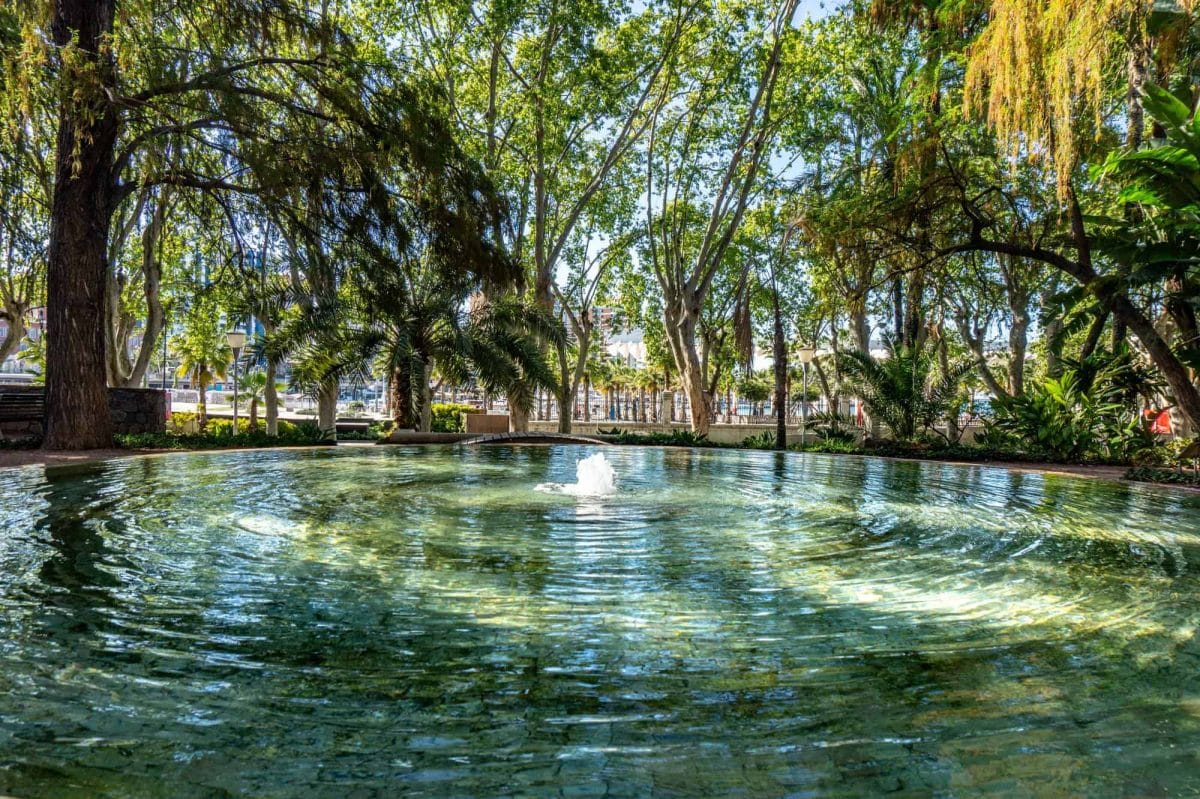
The food reflects the region’s harvest, including olives, almonds, grapes and raisins, goat cheese, sweet wine, honey, seafood, pork, seasonal vegetables, and fruits.
Málaga’s most popular food is the Plato de los Montes de Málaga, Dish from Málaga’s Mountains. It’s a combination platter of french fries/chips, a fried egg, chorizo, morcilla, pork, and fried green peppers.
Spain and Málaga are home to some of the world’s best olive oil.
Insider Tip: Don’t buy olive oil from a grocery store; numerous markets sell the local farmers’ freshly pressed harvest, which simply cannot be matched.
Atarazanas Market is Málaga’s largest and best outdoor food scene. Dozens of local farmers and vendors sell Málaga’s best and freshest foods in a converted historic Arabian shipyard.
It’s also one of Málaga’s best places to eat. Atarazanas Market has been central to Malagueño gastronomy since the 19th century.
Málaga is southern Spain’s largest wine region. There are nearly 20 styles known as Mountain Wine, with a sweet wine called Málaga, the most famous. Malagueños often mix Málaga with the local Mistelle.
The Port of Málaga also functions as a social center with restaurants, cafes, bars, shops, and cultural attractions, all anchored by the Cube.
Shopping in Málaga
In Málaga, the world is at your fingertips, literally. Spain has its own Amazon site, Amazon.es, so if all else fails, there you go.
Near the airport is a Makro warehouse store and an IKEA. There’s a Costco in Seville, which is easily accessible by car, bus, or train.
Insider Tip: Costco and Marko honor memberships from any country.
Málaga has several of Spain’s iconic department store; El Corte Inglés.
The high-end shopping district is in El Centro, anchored by Calle Larios. Built in the 19th century as Málaga’s fashion hub, Calle Larios holds its place.
Since then, the surrounding streets have joined the scene, each unique for different shoppers and tastes.
Luxury shopping is prolific in Marbella, including Marina Banús at the Puerto Banus and Marbella Center on Avenida Ricardo Soriano.
Málaga has several malls. Larios Center is everything you expect from a mall in the US or UK. At the train station is the Vialia Shopping Center. Near the airport is Factory Outlet Málaga, with an El Corte Inglés outlet store.
Insider Tip: The malls and El Corte Inglés are the best electronics and professional supplies options.
Málaga has several artisan markets. Made in Soho, it is worth a visit on the first Saturday of each month. It's obviously in Soho on Calle Tomás Heredia.
On the fourth Sunday of each month, you can enjoy the Merced Market in the Plaza de la Merced.
Final thoughts on living in Málaga
Málaga is for anyone whose number one concern is quality of life.
Living in southern Spain, particularly in Málaga, offers a unique blend of lively entertainment, affordable cost of living, pleasant climate, and rich cultural experiences. Málaga is bathed in sunshine, has an entrepreneurial spirit, and is inspired by creativity, and it is forever young at heart.
Whether you want to retire, have a family getaway, invest in real estate, or find a perfect location for your HQ as an entrepreneur or an aspiring creative, Málaga can certainly become an ideal home for you.
Other popular locations in Spain to consider:
- All About Living On The Costa De La Luz, Spain As An Expat
- 10 Must-Know Facts About Living In Granada, Spain
- The Essential Guide To Living In Valencia As An Expat
- Living In Barcelona – The Expats’ Guide
- The Advantages And Disadvantages Of Living In Madrid
You might find helpful:
- Living In Spain – practical tips and information on Spanish visas, residency, healthcare, taxes, the pros and cons, and more.
- Best Places To Live In Spain – the best and most popular expat locations in Spain.
- Taxes In Spain For Expats - understand your tax liabilities and how much you have to pay when living in Spain.
- Didn’t find what you were looking for or need further advice? Comment with your question below, and we will do our best to help.
Helpful external links:
- List of public schools and educational centers in Málaga - Educacion.Malaga.eu.
- Facilities and spaces in Malaga - Malaga Town Hall site.
- Electronic services portal by The Málaga City Council.
- Information about Málaga public transport, including buses, subway, trains and bicycle hire - Consorcio Málaga, app download required.
- The British Consulate in Málaga - site.
- The Consular Agency in Málaga (Fuengirola) - site.
Secure Peace of Mind with Best-Value International Health Coverage
International Citizens Insurance provide free, no-obligation quotes from the leading international health insurance providers with plans tailored to meet your needs. Trusted by thousands of expats worldwide.











